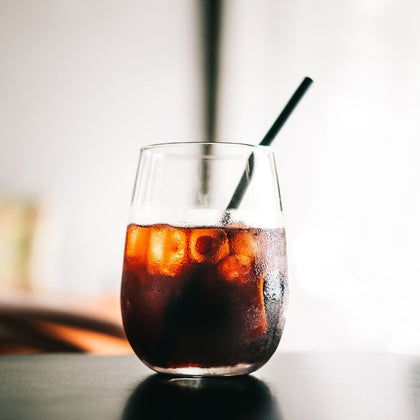How Decaf Coffee is Made
by Beatrice MarkenzonMar 3, 2022

It’s helpful for decaffeinated coffee drinkers to understand how decaf coffee is made. When we raise this question, it is regarding the decaffeination process and not how to brew a cup of decaf coffee. There are different processing methods used to extract the caffeine from harvested green coffee beans.
1. DIRECT SOLVENT DECAFFEINATION METHOD
This process is likely the most well-known decaffeination method. This method was used to create the first batch of decaffeinated coffee beans in the early 1900s.
This process begins with steaming green coffee beans which opens their pores. They are then soaked in a solvent. These days this solvent is either methylene chloride or ethyl acetate. Earlier in history, the solvent used was benzene. However, it was eventually found to be carcinogenic.
The solvent absorbs the caffeine from the coffee beans. Unfortunately, some of the flavor compounds are also absorbed in the process.
The steaming, drying, and roasting of the decaffeinated beans removes any remaining solvents.
2. INDIRECT SOLVENT DECAFFEINATION METHOD
Similar to the Direct Solvent Method, and just as the name indicates, a solvent is used to decaffeinate green coffee beans. However, in this method, the solvent does not come in direct contact with the beans.
Instead of steaming them, the green coffee beans are soaked in hot water where the caffeine and flavor compounds dissolve. After the beans are removed, the solvent is added to this water. The solvent absorbs the caffeine and a small amount of the flavor compounds from the water.
The water is then separated from the solvent. The green coffee beans are then added back to this water where it can reabsorb the lost flavor compounds.
After the beans are removed from the water, they are dried and roasted.
3. WATER PROCESSING
High-end or organic coffees typically go through this decaffeination process. The absence of chemicals is what makes this process attractive.
Similar to the Indirect Solvent Method, Water Processing begins with green coffee beans soaking in hot water. While soaking, the caffeine and flavor compounds are dissolved.
Also, similarly, the caffeine is extracted from the new solution. However, in Water Processing, the extraction occurs using activated carbon filters and not a solvent.
These filters remove the caffeine molecules from the solution, leaving the flavor compounds in the water.
This water is then added to a new batch of green coffee beans. (The original batch is thrown out.) Because this new solution includes flavor compounds, it will not dissolve or remove the flavor from the new batch of beans. Subsequent batches of green coffee beans can reuse this solution. However, it is best used on similar coffee beans so flavors aren’t intermixed.
4. CARBON DIOXIDE METHOD
With this decaffeination method, green coffee beans are soaked in highly compressed carbon dioxide. This carbon dioxide is in liquid form and is created from gaseous carbon dioxide under high compression and cool temperatures.
Similar to the Water Processing, the green coffee beans are first soaked in water. The beans are then transferred to an extraction vessel where liquid carbon dioxide is pumped in at a higher pressure level. In this step, the carbon dioxide acts as a solvent and removes the caffeine from the coffee beans. However, it leaves the flavor compounds behind.
This caffeinated carbon dioxide solution is transferred to an absorption chamber. Once in this container, the pressure is released and the carbon dioxide changes to a gaseous state. As it changes, the caffeine is left behind. The gas form of the carbon dioxide is returned to a pressurized container where it is used again in liquid form on future batches of green coffee beans.
The Carbon Dioxide Method can be relatively expensive and usually used with very large batches of commercial-grade coffee. However, this method is known to be more selective in the extraction of caffeine molecules over flavor compounds.
Using any of these decaffeination methods, the resulting coffee not only has less caffeine but it also has less acidity. In addition, some people believe the coffee’s health benefits are stripped away along with some of the flavor. However, when considering the negative effects of caffeine you will avoid, you may not mind the altered flavor.
Decaf at Maud’s
Maud’s uses Swiss Water Process for all of our decaffeinated coffee blends. This Process is a non-solvent method for decaffeinating unroasted coffee beans.
The decaffeination removes about 97% or more of the caffeine in coffee beans. A typical cup of decaf coffee has about 2mg of caffeine, compared to a typical cup of regular coffee, which has about 95mg of caffeine. It is typically meant for people who need to lower their caffeine intake.
We do however have a new CO2 Decaf Roastmaster Reserve blend that is a chemical-free process that does not strip the coffee of its valuable and nutritious oils as the case with other decafs.
(Article excerpted from burmancoffee.com)




